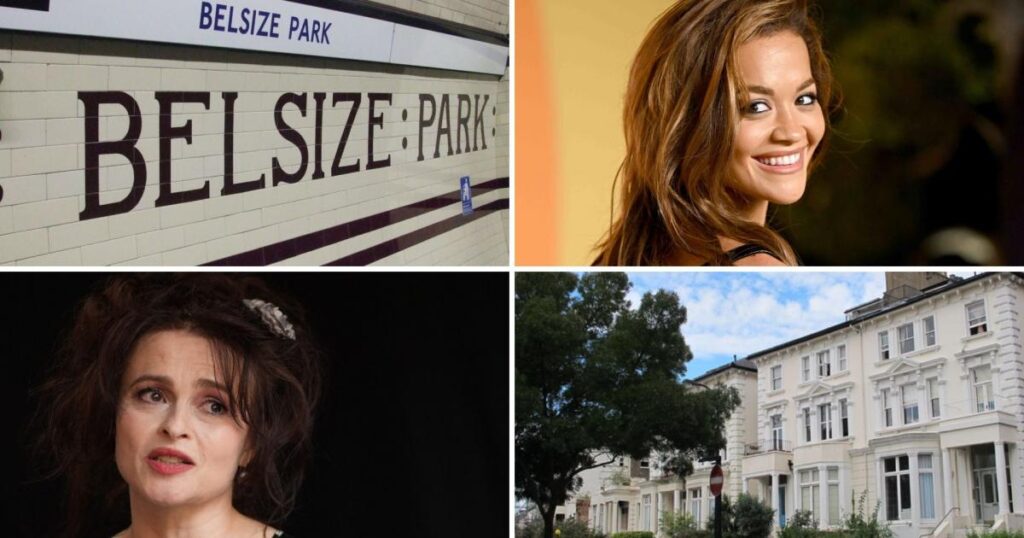Over the decades, the upscale neighbourhood lined with Victorian and Georgian villas has been home to royalty, rock stars, and celebrity.
But the name dates back to the 14th Century when the area was left to the Roman Catholic monks of Westminster Abbey.
The Manor of Belsize – derived from the French bel assis meaning “well situated” – was made up of farms rented out for income.
The name Belsize derives from the French expression ‘bel assis’ or well situated.(Image: Wikimedia Commons)
Following Henry VIII’s marriage to Anne Boleyn, it changed hands to the Abbey’s Anglican Dean, then in the 1600s Colonel Daniel O’Neil built a mansion and parkland there for his wife The Countess of Chesterfield.
Rebuilt in 1663 in Restoration style, Belsize House was sublet in 1720 and the park opened as a pleasure gardens for Londoners looking to escape the dirt and grime of the city.
There were concerts, singing, dancing, country sports such as fishing and racing – the Prince of Wales even visited – but there were also illicit assignations.
Brothels sprung up to service the aristocratic park-goers, and magistrates stepped in to curb the gambling and riotous behaviour.
The park, which would give the area its name stayed open until 1745 when Belsize House was rebuilt. Large houses started springing up for wealthy merchants with the proceeds rolling into Church coffers.
These wealthy leaseholders clubbed together to buy part of the freehold from the Church, which also capitalised when Victorian developers moved in.
Eton College also owned land to the south – The Manor of Chalcots – and from 1829 it sold off large plots along the road that would become Eton Avenue for development.
Names such as Provost Road and College Road were a nod to the past while Belsize Square was built on the site of Belsize House – demolished in 1853 and sold for development.
After the First World War, the area fell into decline as the advent of the Tube and motor car allowed wealthy residents to move further out.
New apartment blocks were built and the large properties divided into boarding houses and lodgings for younger, poorer families.
Dances and concerts were held in Hampstead Town Hall on Haverstock Hill, and in the early 1930s German and Austrian Jewish refugees fleeing Nazi persecution settled in the area, earning the road where they set up their cafes and businesses the nickname ‘Finchleystrasse’.
The list of past and present residents is a who’s who of the rich and famous – Helena Bonham Carter, Tim Burton, Chris Martin of Coldplay and his then wife Gwyneth Paltrow, Jude Law, Tom Hiddleston, Rita Ora, Sigmund Freud, Karl Marx, Noel Gallagher and Henry Moore.
It was Moore who drew the huddled figures of Londoners sleeping on the platform at Belsize Park tube station during the Blitz.
The station – the setting for the homicide in Mavis Doriel Hay’s 1934 thriller Murder Underground – still houses underground shelters built during the war in the tunnels with bunks for up to 8,000.
In addition to its French inspired origins, the 1968 short film Les Bicyclettes de Belsize brought and added touch of fame. The movie about a young man cycling around Hampstead who crashes into a billboard and falls in love with the fashion model in the photo, featured a title song which became a top ten hit for Engelbert Humperdinck.
Later, Marillion singer Fish would sing about “loving on the floor in Belsize Park”, and Kirsty MacColl of “cheering on England” in a Belsize Park pub – perhaps The Washington in England’s Lane, The Belsize Tavern in Belsize Lane or the Steele’s on Haverstock Hill?
Either way, they owe the name to those French speaking Anglo-Normans who once thought the area so beautifully situated.




